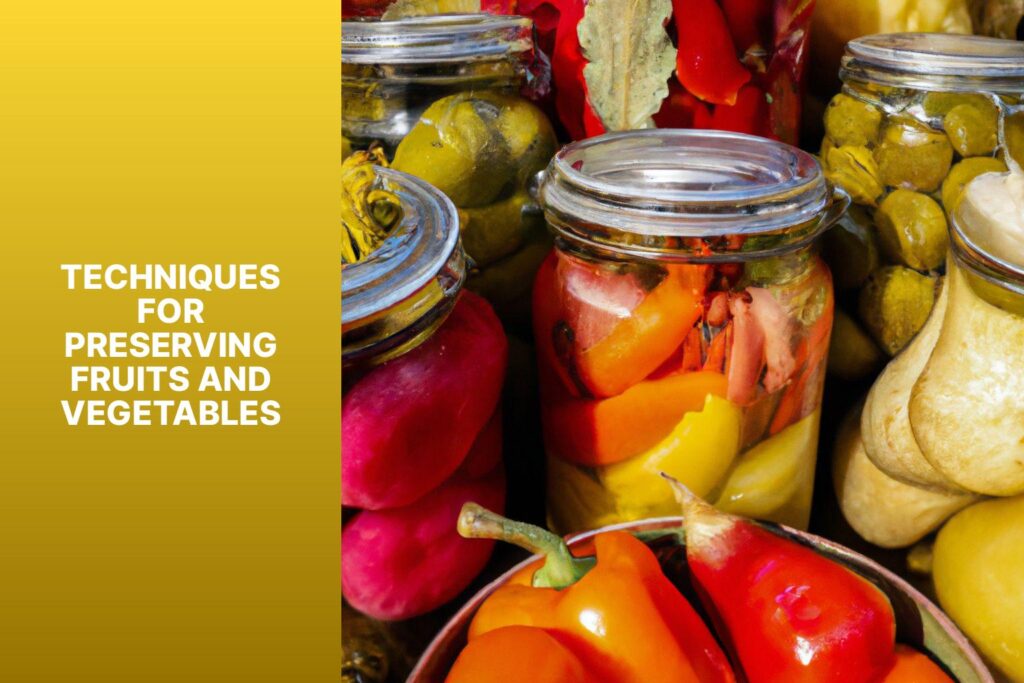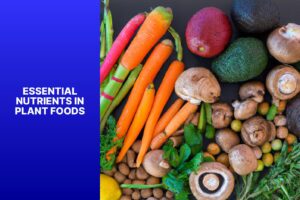Learning Techniques for Preserving fruits and vegetables is key for their nutrition and shelf life. Here are some great ways to do it without compromising quality.
Freezing is one popular method. It stops ripening and keeps flavor, texture, and nutrients. Air-tight containers or freezer bags work best.
Canning is another way. Heat food in jars to kill bacteria and enzymes. Put fruit and vegetables in jars with syrup, juice, or saltwater, seal tight and heat.
Dehydration works too. Removing moisture stops microorganism growth and retains most of the taste and nutrition. Eat these fruits as-is or rehydrate for culinary use.
Pickling adds a tangy twist by immersing vegetables in vinegar, water, salt, sugar, herbs, and spices. This acidity prevents spoilage-causing bacteria while infusing flavors.
Follow specific guidelines for each technique. Suitable packaging, proper temperature, sterilization, and time-management all help preserve the bounty. Enjoy seasonal availability, reduce waste, and savor nature’s gifts in their prime!
Benefits of Preserving Fruits and Vegetables
Preserving fruits and veggies is a great way to enjoy their flavors and nutritional value, even when they aren’t in season! Various techniques can ensure we have access to fresh produce. It reduces food waste, allows us to savor seasonal flavors all year, and retains vitamins, minerals, and antioxidants. Plus, it’s convenient for meal prep and lets us control what goes into our food. And by preserving locally, we can support local farmers and cut down on long-distance transport.
Plus, there are economic benefits! Buying in bulk or growing our own during harvest season can save us money on groceries. It’s also a great way to bring families together, fostering a sense of tradition as recipes and techniques are passed down through generations. Just think of my grandmother, spending hours blanching, peeling, and canning tomatoes to make her delicious homemade sauce.
So let’s enjoy all the benefits of preserving fruits and veggies! It may take some effort, but the rewards are worth it.
Common Techniques for Preserving Fruits and Vegetables
Preserving fruits and veggies is essential to keep them around for the long haul. There are various techniques that can be used to maintain their nutrition, plus amp up their flavors. The common ones are canning, freezing, drying, fermenting, and pickling. Additionally, cold storage is a great way to store certain produce, like apples and carrots, without freezing them.
This practice has been around for centuries! Ancient Egyptians used drying techniques as far back as 4,000 years ago. They laid the groundwork for more advanced modern methods.
Preserving fruits and veggies isn’t just a culinary practice – it’s a vital part of sustainability and food security. By using these techniques, we can enjoy seasonal produce all year, while reducing waste and making sure everyone has access to healthy food even outside of the growing season.
Additional Tips for Successful Preservation
Preservation of fruits and vegetables is a great skill! Here are some tips for success:
- Get high-quality produce: Get fresh and ripe fruits and veggies!
- Clean properly: Wash the produce before you save it.
- Pick the correct techniques: Choose methods like canning, freezing, or dehydrating based on the type of fruit or veggie.
- Follow recipes: Stick to good ones with instructions on prep, processing times, and storage.
- Monitor storage: Keep preserved fruits and veggies in cool, dark places with controlled humidity.
Remember to blanch certain vegetables before preserving to keep their color and texture. Blanching is boiling them briefly and then cooling them in ice water. This will help maintain the desired quality of your veggies over time.
Pro Tip: Label your preserved fruits and veggies with dates and contents. That way, you’ll know what to use first and have better flavor and freshness.
Conclusion
Preserving fruits and veggies is a must, to keep them available and nutritional for longer. Canning, freezing, drying and vacuum sealing can help us do this.
Canning involves sealing the produce in sterile containers with high heat treatment – this stops bacteria, yeast and mold from growing.
Freezing slows down the enzymatic activity that causes spoilage while preserving color, flavor and nutrition.
Drying removes moisture to prevent bacterial growth.
Vacuum sealing also stops microbial spoilage and oxidation reactions that might lead to nutrient loss.
Using high-quality containers and bags designed for each method, choosing ripe produce and labelling containers with dates will help preserve produce even better.
Frequently Asked Questions
1. What are the best techniques for preserving fruits and vegetables?
There are several effective techniques for preserving fruits and vegetables. Some popular methods include canning, freezing, drying, pickling, and making jams and jellies.
2. How does canning help in preserving fruits and vegetables?
Canning involves sealing fruits and vegetables in jars and heating them to kill bacteria and other microorganisms that can cause spoilage. This method creates a vacuum seal that prevents the growth of bacteria, allowing the food to be preserved for long periods.
3. Is freezing a suitable option for preserving fruits and vegetables?
Yes, freezing is a great method for preserving fruits and vegetables. Freezing helps to retain the nutritional value, flavor, and texture of the produce. Make sure to blanch vegetables before freezing to deactivate enzymes that can lead to spoilage.
4. Can I preserve fruits and vegetables by drying them?
Absolutely! Drying is an ancient technique of preserving fruits and vegetables. When moisture is removed, microorganisms cannot survive, allowing the food to last longer. You can air-dry produce or use a dehydrator for more efficient results.
5. How does pickling work as a preserving technique?
Pickling involves preserving fruits or vegetables in a solution of vinegar, salt, and sometimes sugar and spices. The acidic environment created by pickling helps to inhibit bacterial growth, extending the shelf life of the produce and adding a tangy flavor.
6. What is the process of making jams and jellies for preserving fruits?
Making jams and jellies involves cooking fruits with sugar and sometimes pectin to create a thick, spreadable consistency. The high sugar content acts as a preservative by inhibiting the growth of bacteria. Jams and jellies can be stored in sterilized jars for long-term preservation.



